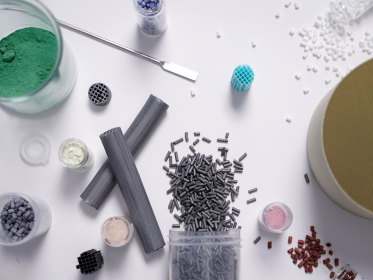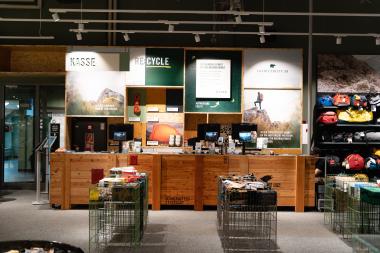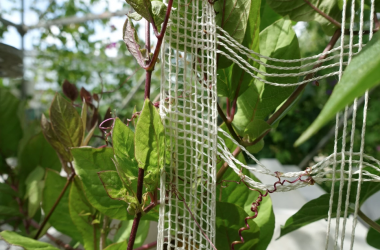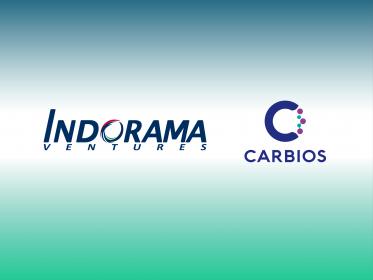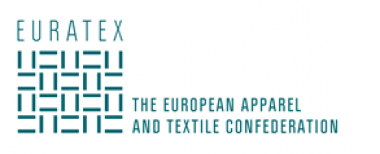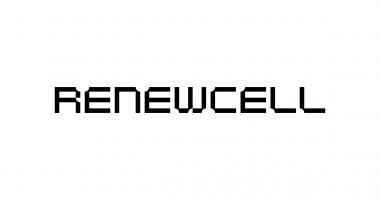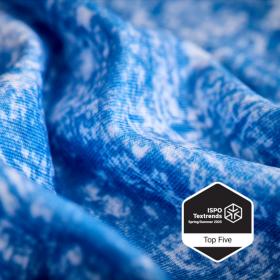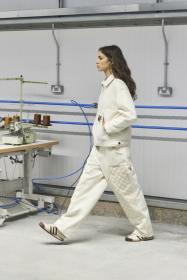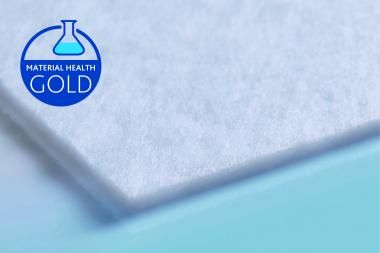Nachhaltigere und emissionsärmere Syntheseroute für Polymere
Butadien ist eine wichtige Plattformchemikalie, um Polymere – u.a. für die Produktion von Autoreifen – herzustellen. Bislang wird das Monomer aber meist auf Basis von Erdöl gewonnen. Eine alternative Syntheseroute haben Forschende des Fraunhofer UMSICHT im Rahmen des Projektes Power2C4 untersucht. Im Fokus: ein katalytisches Verfahren unter Einsatz regenerativ erzeugten Stroms.
»Butadien spielt eine wichtige Rolle bei der Herstellung von Polymeren«, ordnet UMSICHT-Wissenschaftler Marc Greuel ein. Neben Polybutadien, das in Autoreifen Anwendung findet, können Polytetrahydrofuran (PTHF), Polybutylenterephtalat (PBT) und Polybutylensuccinat (PBS) aus dem Monomer erzeugt werden. »Der Haken: Aktuell wird Butadien zu 95 Prozent als Nebenprodukt beim thermischen Zersetzen von Rohbenzin zu Ethen gewonnen – unter Ausstoß von Kohlendioxid. Zudem werden die Preise für Butadien perspektivisch ansteigen, da sich die Rohstoffbasis für Ethen immer mehr in Richtung Schiefergas verschiebt und dadurch die Produktionskapazität für Butadien sinkt.« Das Interesse an einem alternativen Herstellungsprozess ist also nicht nur aus Klimaschutzgründen groß.
Die Frage, wie eine nachhaltigere, emissionsärmere und auch günstige Syntheseroute aussehen kann, stand im Zentrum des Projektes Power2C4. Angesiedelt im Kompetenzzentrum »Virtuelles Institut – Strom zu Gas und Wärme« hat es Expertinnen und Experten des Fraunhofer UMSICHT, des Gas- und Wärme-Instituts Essen e.V., des Energiewirtschaftlichen Instituts an der Universität zu Köln, des Forschungszentrums Jülich, der Ruhr-Universität Bochum, des Wuppertal-Instituts und des ZBT Duisburg zusammengeführt. Ihre Zielsetzung: Flexibilitätsoptionen vor dem Hintergrund der Energiewende zu untersuchen. Im Fokus des Teilprojekts Power2C4 stand ein neues katalytisches Herstellungsverfahren unter Einsatz regenerativ erzeugten Stroms. Ausgangspunkt ist Ethanol, das zum Beispiel im Zuge einer Hydrierungsreaktion aus CO2 und elektrolytisch erzeugtem Wasserstoff gewonnen wird. Dieses Ethanol dient in einem zweiten Schritt zur Synthese von Butadien mittels des sogenannten Lebedev-Prozesses.
Vielversprechendes Katalysatorsystem identifiziert
Da der erste Schritt bereits Gegenstand zahlreicher Forschungsaktivitäten ist, konzentrierten sich Wissenschaftlerinnen und Wissenschaftler auf die Weiterveredlung des Ethanols zu Butadien und die Verfahrenskopplung beider Schritte. »Wir haben u.a. ein neues Katalysatorsystem auf Basis eines synthetischen Saponiten identifiziert und anschließend synthetisiert«, erklärt Dr. Barbara Zeidler-Fandrich vom Fraunhofer UMSICHT. Die Testung der katalytischen Aktivität erfolgte in einer eigens konstruierten Versuchsanlage. »Aufbauend auf einem ersten Screening haben wir aussichtsreiche Materialien weiter optimiert. Das Ergebnis: Verglichen mit dem unmodifizierten Ausgangsmaterial lässt sich die Butadien-Selektivität im Rahmen der Katalysatoroptimierung deutlich erhöhen. Allerdings ist auch klar geworden, dass noch weiteres Potenzial zur Verbesserung der Katalysatorperformance besteht.«
Nachhaltigkeitsbewertung des Power-to-Butadien-Prozesses
Wie nachhaltig dieser Power-to-Butadien-Prozess wirklich ist, haben Dr. Markus Hiebel und Dr. Daniel Maga vom Fraunhofer UMSICHT in einer Life Cycle Analysis (LCA) untersucht. Beleuchtet haben sie dabei – neben unterschiedlichen Katalysatoren – die Herstellungsmethode von Ethanol und die Relevanz der eingesetzte Energiequelle. »Wir konnten zeigen, dass der Lebedev-Prozess je nach verwendeter Ethanol- und Energiequelle das Potenzial hat, Butadien und damit auch Styrol-Butadien-Kautschuk aus biobasiertem Ethanol oder CO2-basiertem Ethanol herzustellen und CO2-Emissionen zu reduzieren«, so Daniel Maga. »Damit ermöglicht der Power2C4-Prozess die Nutzung alternativer Kohlenstoffquellen.« Besonders die Nutzung von Ethanol aus Restbiomasseströmen wie Bagasse oder Stroh eröffne Wege, Treibhausgasemissionen von Butadien deutlich zu reduzieren. Zudem führe ein Strommix mit immer höheren Anteilen an erneuerbaren Energien zur Möglichkeit, Treibhausgasreduktionen über Carbon-Capture-and-Utilization-Prozesse (CCU) zu realisieren.
FÖRDERHINWEIS
Das Kompetenzzentrum »Virtuelles Institut – Strom zu Gas und Wärme« wird gefördert durch das »Operationelle Programm zur Förderung von Investitionen in Wachstum und Beschäftigung für Nordrhein-Westfalen aus dem Europäischen Fonds für regionale Entwicklung« (OP EFRE NRW) sowie durch das Ministerium für Wirtschaft, Innovation, Digitalisierung und Energie des Landes Nordrhein-Westfalen.
Polymere Butadien Synthese Erdöl Benzin Fraunhofer-Institut für Umwelt-, Sicherheits- und Energietechnik UMSICHT UMSICHT Fraunhofer UMSICHT
Fraunhofer UMSICHT


